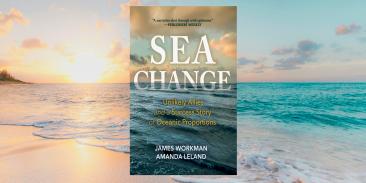Amazon’s indigenous people already experiencing early effects of climate change
NEWS RELEASE
(WASHINGTON – April 22, 2013) Indigenous groups in the Brazilian Amazon are experiencing indications of climate change that threaten their traditional way of life, according to an article published today in the Philosophical Transactions of the Royal Society B.
“Indigenous people are telling us rainfall and river levels have changed; the fires they’re dealing with are different now; and the climate systems they used to depend on for growing crops have become unpredictable,” said Steve Schwartzman, lead author of the study and director of tropical forest policy at Environmental Defense Fund. “When these ancient practices are no longer reliable, that in itself is an early indication of climate change.”
In the article, “The Natural and Social History of the Indigenous Lands and Protected Areas Corridor of the Xingu River Basin,” the authors cite original interviews with indigenous leaders who note significant changes in the forest’s rainfall patterns, river levels, fires and agriculture cycles their groups have relied on for thousands of years.
These “observed changes may themselves be indicators of climate change,” the authors write in the article, which focuses on a massive tract of the Amazon – about the size of the United Kingdom – called the Xingu River Basin.
“The future of the last, largest remaining forest is something that affects everybody. But, by that same token, we affect it too,” Schwartzman said. “Indigenous groups who have lived in the Amazon for centuries, even millennia, are seeing signs that the climate is changing there. It’s another of many signals that we really need to be doing something about climate change.”
Around 15% of the global carbon dioxide emissions that cause climate change come from deforestation, and much of that occurs in the Amazon. However, since 2005 the Amazon has seen its deforestation rate drop more than 70% below the historic average. Evidence strongly suggests this is a result of Brazilian laws that have established “protected areas” and, in particular, indigenous-controlled land, with the latter now accounting for more than 20% of the Amazon.
The sustainability of indigenous and protected areas, the authors write, “also depends on sustainable sources of finance.” The article highlights policies to Reduce Emissions from Deforestation and Forest Degradation (REDD+) and payment for ecosystem services, whether from public or private sources, as possible sources.
With more than 3 million members, Environmental Defense Fund creates transformational solutions to the most serious environmental problems. To do so, EDF links science, economics, law, and innovative private-sector partnerships to turn solutions into action. edf.org
Media Contact
Latest press releases
-
Canada-Alberta MOU a Disappointing Retreat on Oil & Gas Methane Regulation
November 27, 2025 -
Trump EPA Delays Methane Pollution Protections from Oil and Gas Industry Despite Health Risks, Energy Waste, Widespread Opposition
November 26, 2025 -
New York’s Climate Law Experiences Another Delay
November 25, 2025 -
Trump’s EPA Abandons Defense of National Soot Standard That Saves Lives
November 25, 2025 -
New Jersey Settlement: Protecting Residents and Their Environment
November 24, 2025 -
Report: Clean Energy Manufacturing Investments Dropped $3.4 Billion Last Month
November 20, 2025











